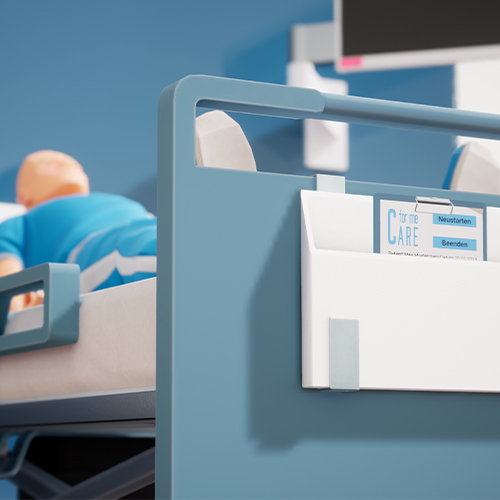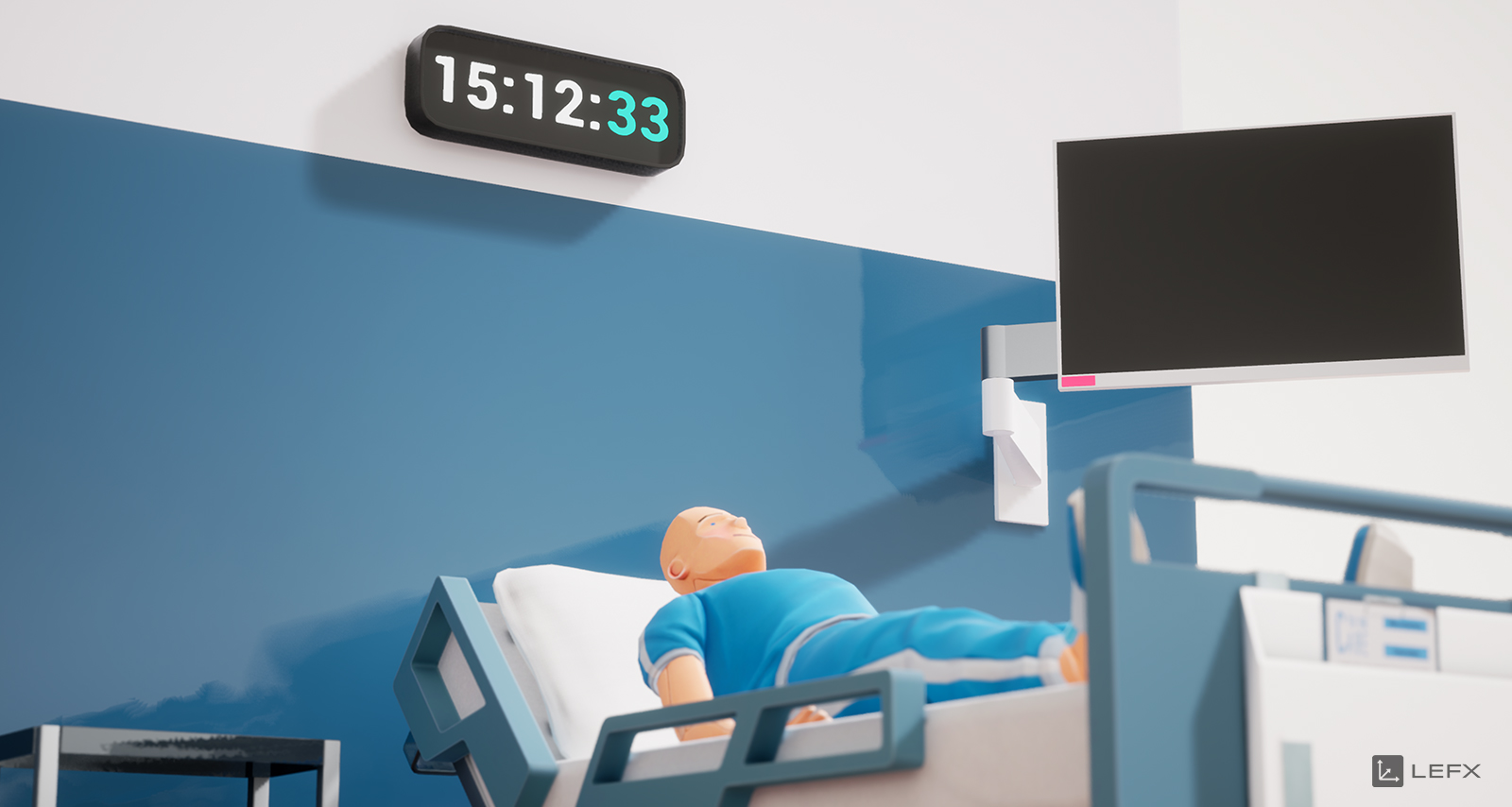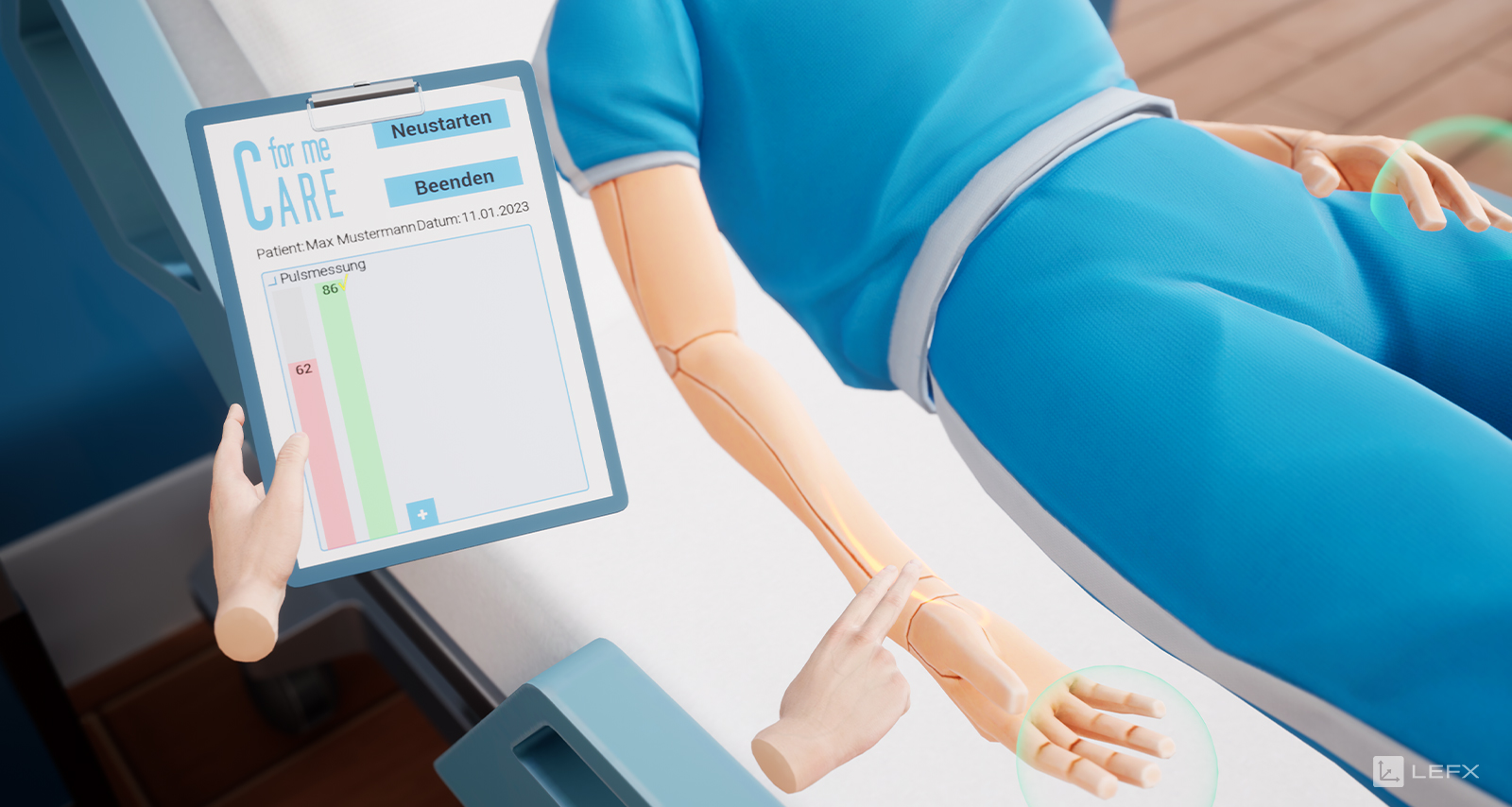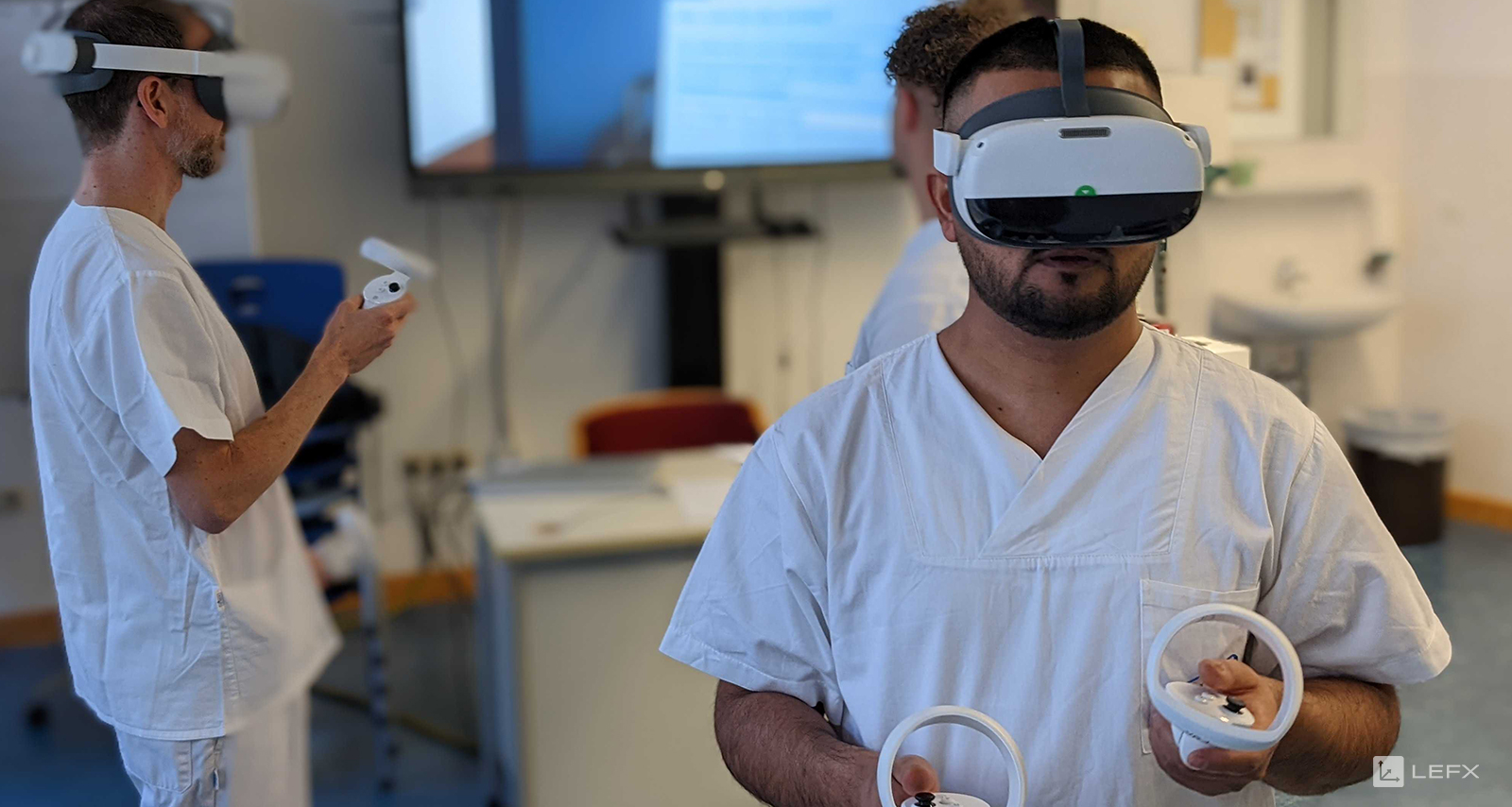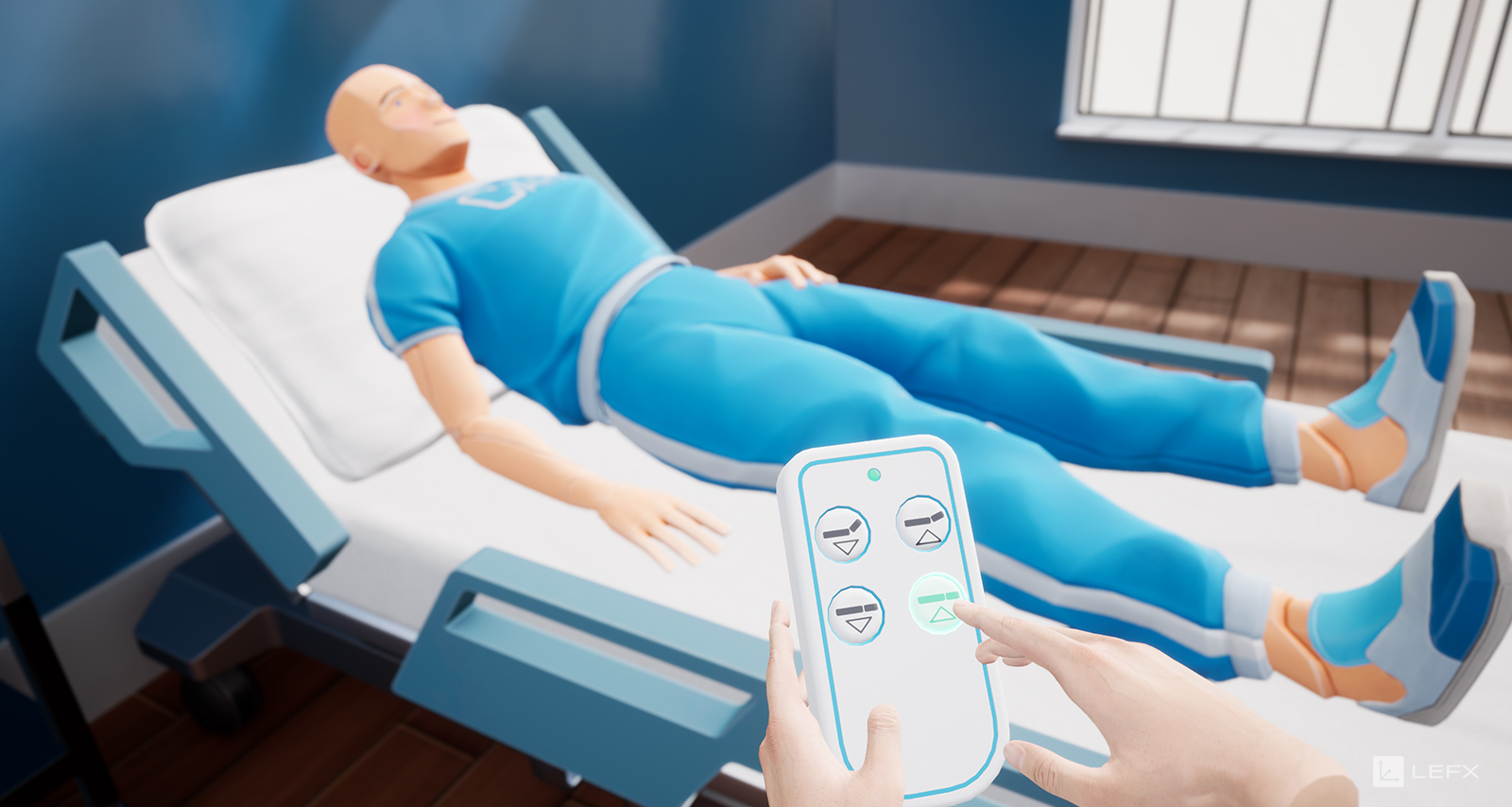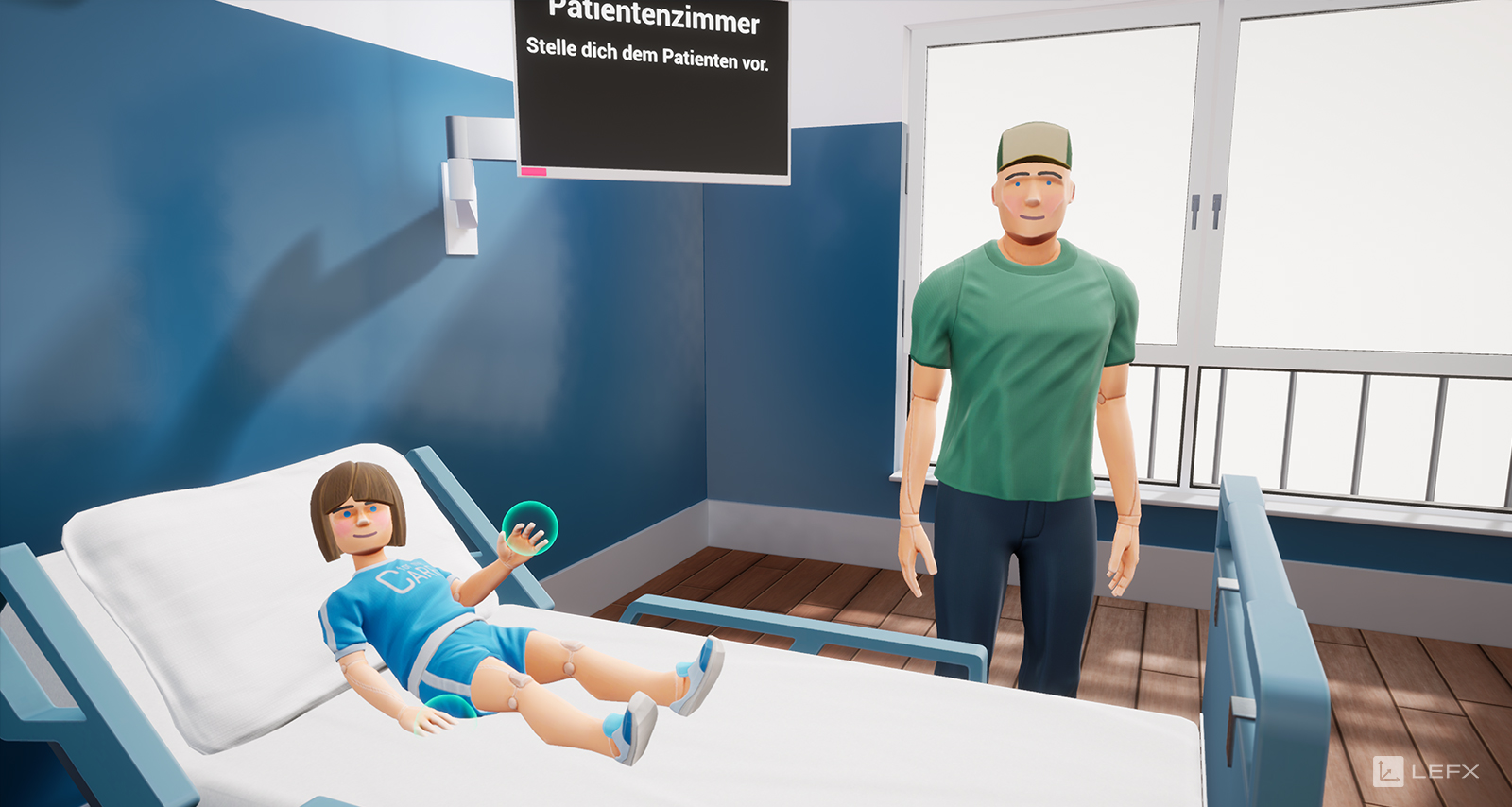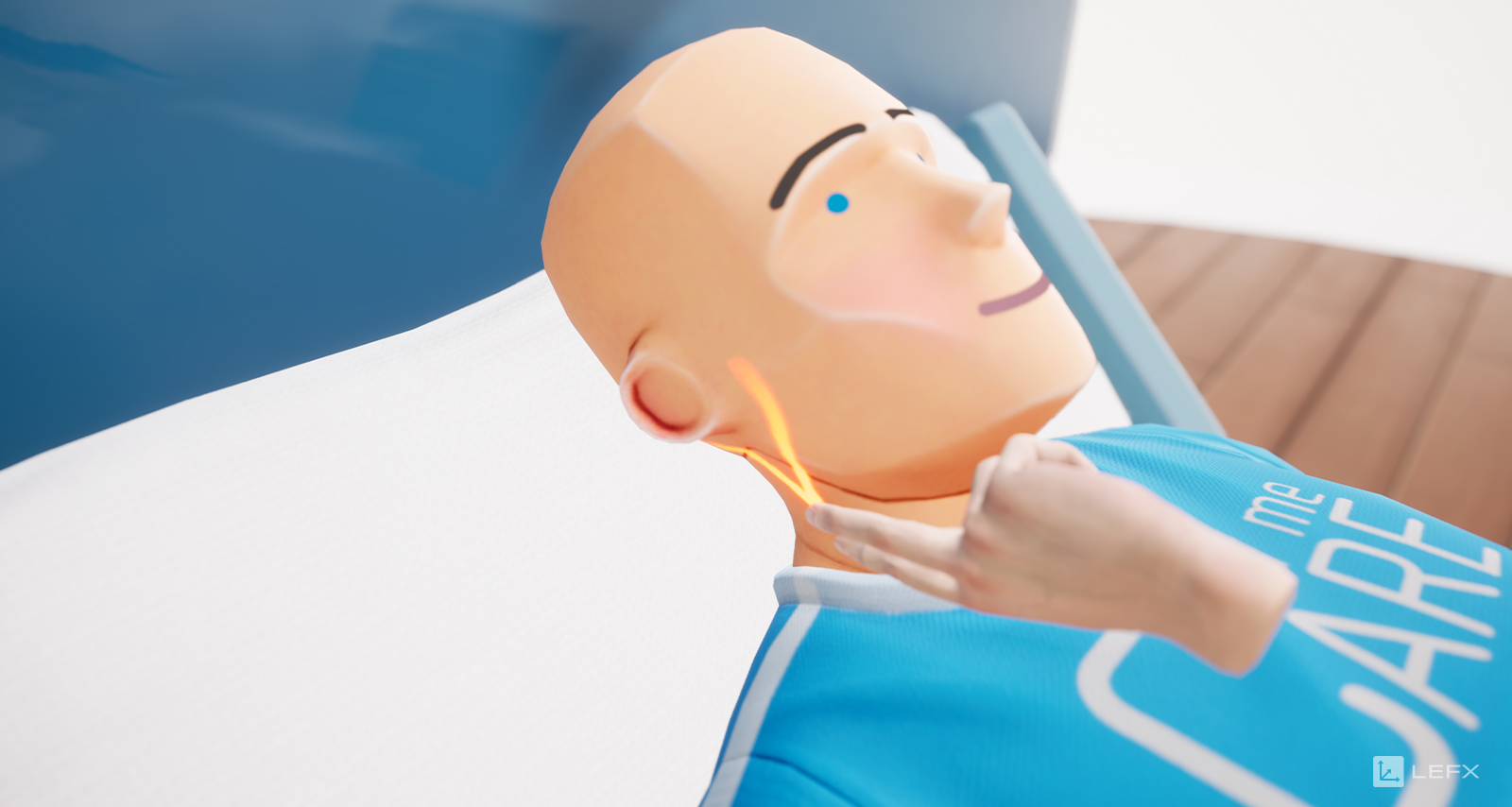Actively counteracting the shortage of skilled nursing staff
VR training is already being used in healthcare, but it is mainly used in the education and training of highly specialized professionals such as surgeons. So why not make this innovative form of learning accessible to other professionals? That’s exactly what we are doing – With our VR Patient Care application, we are creating a prototype for the promising and underestimated use case of training nurses.
On the pulse of time
This is our mantra for the cooperation with our project partner, the Pflegeschulen Wannsee. Together, we want to make teaching not only more digital, but above all more active, in order to offer training that is as practical and attractive as possible. As a side effect, we increase motivation and stimulate motor memory for sustainable learning success. In addition to consolidating theoretical knowledge, virtual training units also help students to experience everyday work processes in order to overcome fears of contact and to be optimally prepared for dealing with patients.
What is particularly close to our hearts
In terms of content, we start with a simple, clearly defined topic, pulse measurement. Here, the focus is on practical application, and thanks to VR training, each student receives direct feedback without the need for one-on-one supervision by a teacher. This allows students to practice more extensively and at their own pace until every move and mental arithmetic is perfect.
We want to teach the learners how to take their pulse and not to raise their own pulse unnecessarily. Since there is hardly any previous experience with VR among the students, we make sure that the application is low barrier and focus on intuitive and simple operation.
For a low-threshold entry, we have invested a lot of heart and soul in a detailed tutorial with sufficient opportunity to practice and try it out. This allows trainees to test the virtual environment and controls extensively until they feel confident so that they can concentrate fully on the tasks in the actual training.
Performance on Point, but no Pressure
The vital functions must be reproduced realistically in terms of both haptics and timing in order to offer real added value. For this purpose, the pulse beats are simulated by means of vibration feedback from the controller, which can be controlled precisely and can thus deceptively simulate the human pulse.
In addition to taking the pulse, the focus is on evaluating the measured values. The application provides direct feedback as to whether the calculated values are correct or how far they deviate from the actual pulse.
For uncomplicated and cost-efficient use, we also relied on stand-alone headsets for this training and adapted the graphic display to the limited performance. This results in a minimalistic but compelling art style that doesn’t run the risk of exceeding the limit of the VR goggles or distracting from the instructional content.
For this project, we also draw on the expertise of our hardware partner Schenker Technologies, who, in addition to advising on the appropriate device, put together a comprehensive overall package with a class set of VR glasses including a storage solution.
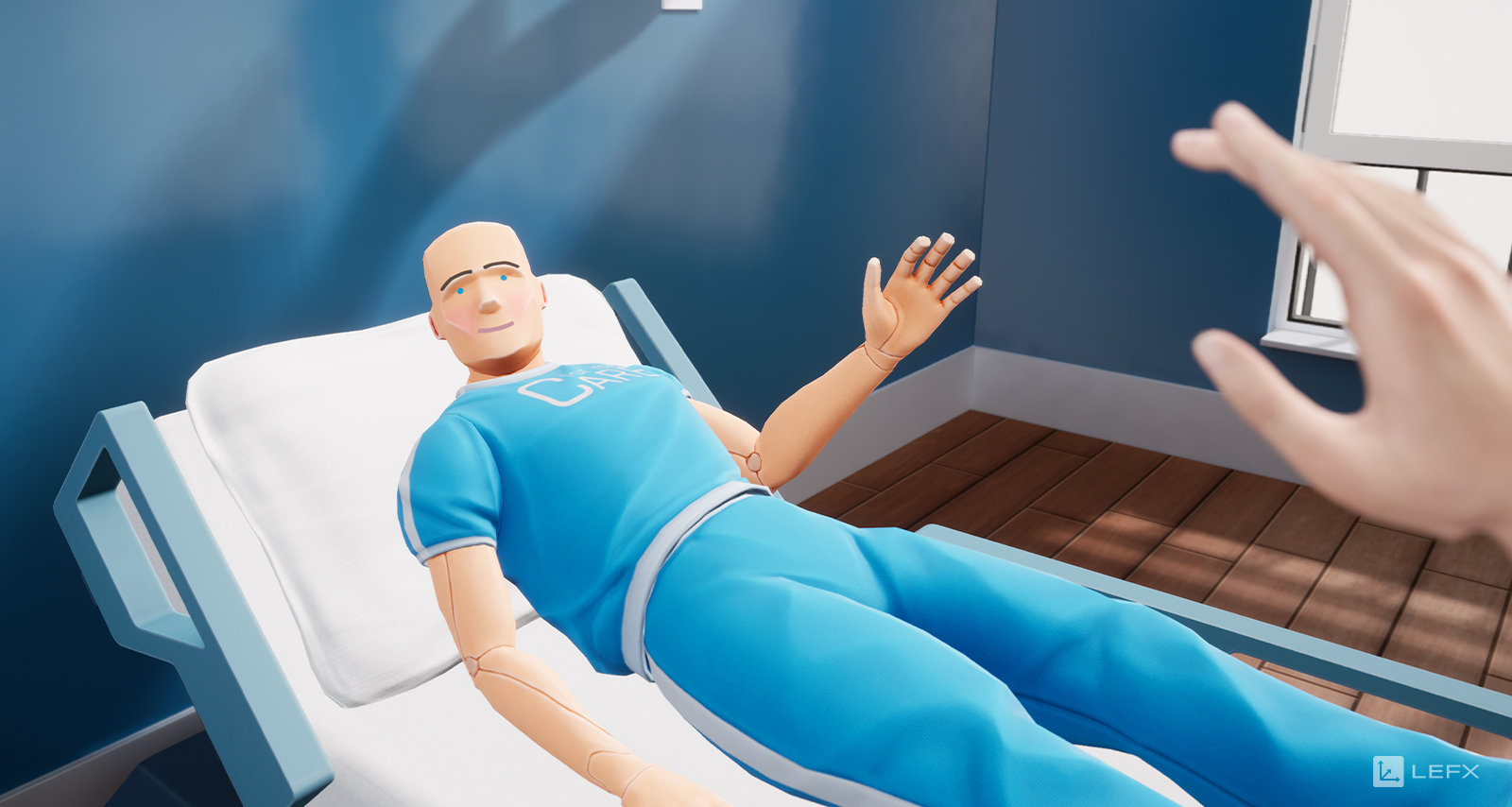
The application not only makes our customer’s heart beat faster
In addition to the training center, we are getting very positive feedback and suggestions for the planned expansion, especially from the students:
We start with more variance in the patients to also map children with a faster heart rate or people with cardiac arrhythmias. In addition, the patient will be more active and more interaction with him and other disturbing factors in the room will be required. To ensure that theory is not neglected, multiple-choice questions that test specialist knowledge or situational actions are also regularly included. In short, we create an everyday scenario that is as realistic as possible, in which the trainees are ideally prepared for their challenging day-to-day work.
Our goal is also to expand the portfolio in the long term with additional teaching content and more complex scenarios, so that a large part of the training is practical and digital.
VR Patient Care Trailer
